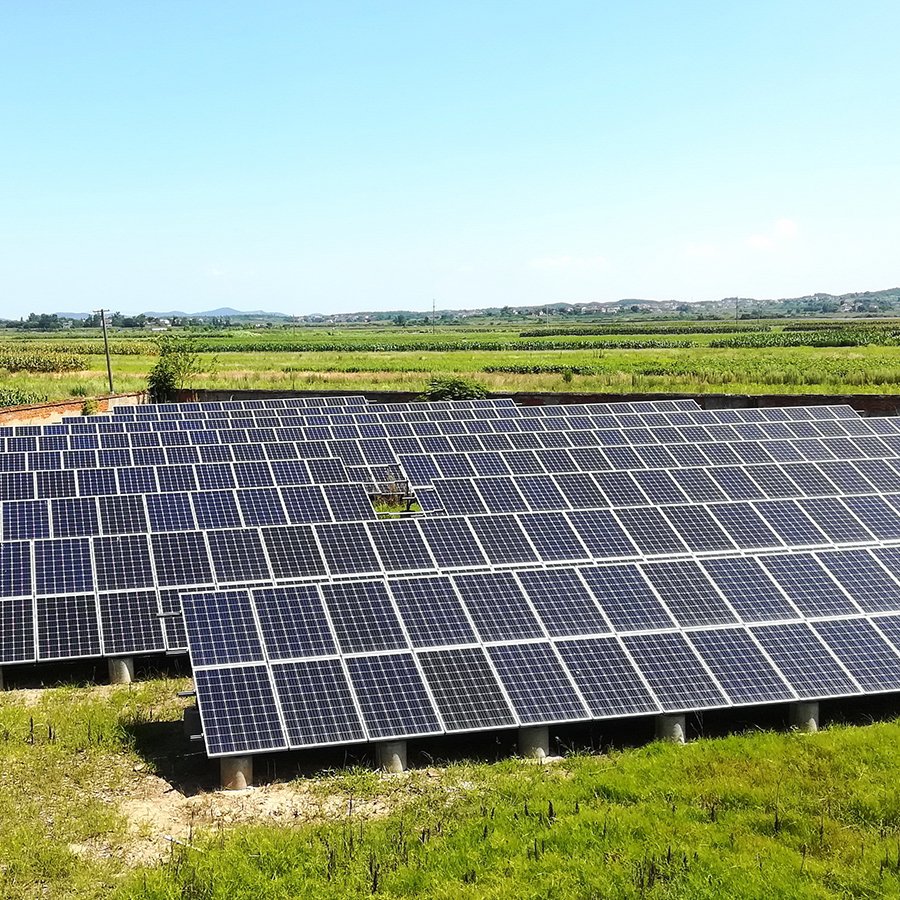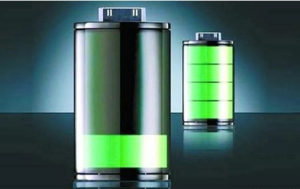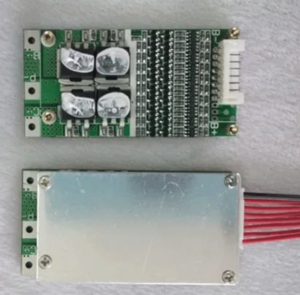1.The historical origin of photovoltaic power generation dates back to 1839 when a young French scientist named Becquerel conducted physics experiments and discovered the “photovoltaic effect.” He observed that when light irradiated two metal electrodes immersed in a conductive liquid, the resulting current was strengthened. In 1930, Lang proposed the use of the photovoltaic effect to create solar cells, which convert solar energy into electricity. The first “cadmium sulfide” solar cell was developed by Aldubote and Stora in 1932. Later, in 1941, Audubot discovered the photovoltaic effect on silicon.
2.A significant breakthrough occurred in May 1954 when Chiabin, Fuller, and Pearson from Bell Laboratories in the United States developed the world’s first practical solar cell using monocrystalline silicon. This solar cell achieved an efficiency of 6%. In the same year, Wick discovered that nickel arsenic exhibited a photovoltaic effect. By depositing nickel sulfide film on glass, solar cells could be created. This marked the birth and development of practical photovoltaic power generation technology, enabling the conversion of sunlight into electric energy using thin film solar panels, thin film solar cells, thin film solar, solar panel film, and thin film PV.
3.Photovoltaic cells, including silicon solar cells, are semiconductor devices that possess optical and electrical conversion characteristics. They play a crucial role in generating electricity from solar radiation. These cells directly convert sunlight into direct current (DC), making them the fundamental building blocks of photovoltaic power generation. The unique electrical properties of photovoltaic cells arise from the incorporation of certain elements, such as phosphorus or boron, into crystalline silicon. This integration creates a permanent charge imbalance within the material’s molecular structure, resulting in the formation of semiconductor materials with distinctive electrical properties. When exposed to sunlight, the semiconductor material exhibits specific electrical characteristics, leading to the generation of free charges. These charges move in a directed manner and accumulate within the material. By connecting both ends of the cell, an electrical circuit is completed, leading to the production of electricity. This remarkable phenomenon is known as the “photovoltaic effect,” which is at the core of the functioning of organic solar cells and other types of solar cells.
4.The photovoltaic power generation system consists of several key components. One of these components is the photovoltaic array, which is made up of interconnected photovoltaic modules. These modules can be arranged in series and parallel configurations to achieve the desired electrical output. The photovoltaic module, at its core, comprises a series of solar panel cells. These cells are responsible for converting solar energy into electrical energy through the photovoltaic effect. They generate direct current (DC) electricity, which can be utilized as is or converted into alternating current (AC) using a DC/AC inverter for practical applications.
Apart from the photovoltaic array, the system includes other essential elements. A controller is incorporated to regulate and optimize the flow of electricity, ensuring efficient operation and protection against overcharging or discharging of batteries. Batteries and energy storage devices can be integrated into the system to store excess energy generated by the photovoltaic modules. This stored energy can then be released as needed, providing a reliable source of electricity even when sunlight is not available.
In addition to the mentioned components, the photovoltaic power generation system may also include a DC/AC inverter. This device converts the DC electricity produced by the photovoltaic modules into AC electricity, which is suitable for powering household appliances and being fed into the electrical grid. Furthermore, advancements in solar technology have introduced innovative solutions such as tandem PV and bifacial PV. Tandem PV involves combining multiple layers of solar cells with varying material properties to enhance efficiency and performance. Bifacial PV systems utilize solar panels that can generate electricity from both sides, capturing sunlight from the front as well as reflected light from the rear.
Overall, the photovoltaic power generation system with its various components, including solar panel modules, inverters, controllers, and energy storage devices, provides a sustainable and environmentally friendly means of converting solar energy into usable electrical power. It is a versatile solution that can be tailored to meet the specific energy needs of different applications and contribute to the transition towards cleaner and more sustainable energy sources.
5.The distribution network, also known as the power distribution system, serves as the intermediary between the transmission network or regional power plants and the end-users of electric energy. Its primary function is to distribute electricity to various users within a specific area. The distribution network is comprised of a range of infrastructure and equipment, including overhead lines, cables, towers, distribution transformers, isolation switches, reactive power compensation capacitors, and metering devices, among others. These components work together to facilitate the efficient and reliable distribution of electrical power.
The distribution network operates through a step-by-step distribution process, where electric energy is delivered to users based on their voltage requirements. The network is typically designed in a closed-loop configuration and adopts a ring operation structure. This arrangement allows for more reliable and stable power supply, as it provides alternative paths for the flow of electricity, ensuring continuous availability in case of any disruptions or faults.
Distributed photovoltaic power generation refers to the integration of power generation at the distribution level. It enables the coexistence of power generation and consumption within the distribution system. By connecting distributed power sources, such as photovoltaic systems, to the distribution network, the traditional radial structure of the network transforms into a multi-power structure. This transition brings about changes in the distribution network’s characteristics, including the size of short circuit currents, flow direction, and overall distribution patterns.
The relationship between the distribution network and distributed photovoltaic power generation is symbiotic. Distributed photovoltaic power generation adds decentralization to the power system, allowing for local generation of electricity closer to the point of consumption. This reduces transmission losses and enhances grid resilience. The distribution network provides the infrastructure and framework necessary for the integration of distributed power sources into the overall power system. It facilitates the connection and synchronization of photovoltaic systems, enabling the generated electricity to be efficiently distributed to nearby consumers.
In conclusion, the distribution network plays a crucial role in the reliable and efficient distribution of electric energy to end-users. With the rise of distributed photovoltaic power generation, the network structure has evolved from a radial configuration to a multi-power system. This transformation brings benefits such as reduced transmission losses and enhanced grid resilience, as power generation and consumption coexist at the distribution level. The distribution network acts as the backbone for the integration of distributed photovoltaic power generation, enabling the utilization of solar technologies such as perovskite photovoltaics, crystalline silicon photovoltaic cells, organic solar panels, and crystalline silicon solar cells to contribute to a cleaner and more sustainable energy future.

6. Why is photovoltaic power a green and low-carbon energy source? Photovoltaic power generation has significant energy, environmental protection and economic benefits, is one of the best quality green energy, in China’s average sunshine conditions installed 1 kilowatt photovoltaic power generation system, 1 year can emit 1200 KWH of electricity, can reduce the use of coal (standard coal) about 400 kilograms, reduce carbon dioxide emissions about 1 ton, According to the World Wide Fund for Nature (WWF) research results: from the effect of reducing carbon dioxide, the installation of 1 square meter photovoltaic power generation system is equivalent to afforestation 100 square meters, the current development of renewable energy such as photovoltaic power generation is a fundamental solution to smog, acid rain and other environmental problems one of the effective means.
7. What do you think of the news reported that “the production of photovoltaic modules consumes a lot of energy”? Photovoltaic cells in its production process does consume a certain amount of energy, especially industrial silicon purification, high-purity polysilicon production, monocrystalline silicon rod \ polysilicon ingot production of three links of high energy consumption, but photovoltaic cells in the 20-year service life can continue to produce energy. It is estimated that under the average sunshine conditions in China, the energy return over the life of the photovoltaic power generation system exceeds its energy consumption by more than 15 times. The energy recovery period of a 1 kW rooftop photovoltaic grid-connected system installed at the optimal tilt Angle in Beijing is 1.5-2 years, far below the service life of the photovoltaic system. That is to say, the photovoltaic system in the first 1.5-2 years of the power is used to offset its production and other processes of energy consumption, 1.5-2 years after the energy is pure output, so should be assessed from the perspective of the full life cycle of photovoltaic cell energy consumption.
8. What do you think of reports that “the production of photovoltaic modules will produce a lot of pollution?” Photovoltaic cell module production includes polysilicon, silicon ingot silicon wafers, photovoltaic cells and photovoltaic modules several industrial chain links, related pollution reports mainly refers to the raw materials of photovoltaic modules, high-purity polysilicon production produced byproducts, high-purity polysilicon production is mainly the use of improved Siemens method, which converts metallurgical grade silicon into trichloroheliosilicon, In addition to hydrogen reduction into solar grade polysilicon, will form a by-product silicon chloride, silicon tetrachloride in the case of humid air is decomposed into silicon acid and hydrogen chloride, if improper treatment will produce pollution problems, but at present China polysilicon production enterprises using the improved Siemens method has been able to do closed-loop production, the by-product silicon tetrachloride and tail gas recycling, to achieve clean production. In December 2010, the state issued the “polysilicon industry access conditions”, which stipulates that the recovery rate of silicon tetrachloride and chlorine gas in the reduction tail gas is not less than 98.5%, 99%, so the mature improved Siemens method production technology fully meets the requirements of environmental protection and will not produce environmental pollution problems.
9. How much sunlight do we have available? Could it be the dominant energy source of the future? The solar radiation received by the Earth’s surface can meet the global energy demand of 10,000 times, the average annual radiation received per square meter of the ground surface varies between 1000-2000KWH, the International Energy Agency data show that in the world’s 4% of the desert installed solar photovoltaic system is enough to meet the global energy demand. Solar photovoltaic enjoys a broad space for development, and its potential is huge. According to preliminary statistics, China only use the existing building to install photovoltaic power generation market potential of about 3 trillion kilowatts, plus the vast Gobi photovoltaic power generation market potential of about billions of kilowatts, with the technical progress and large-scale application of photovoltaic power generation, its power generation costs will be further reduced, become a more competitive energy supply mode, Gradually from complementary energy to alternative energy and hope to become the dominant energy in the future.”
If you have more needs, please contact us!




